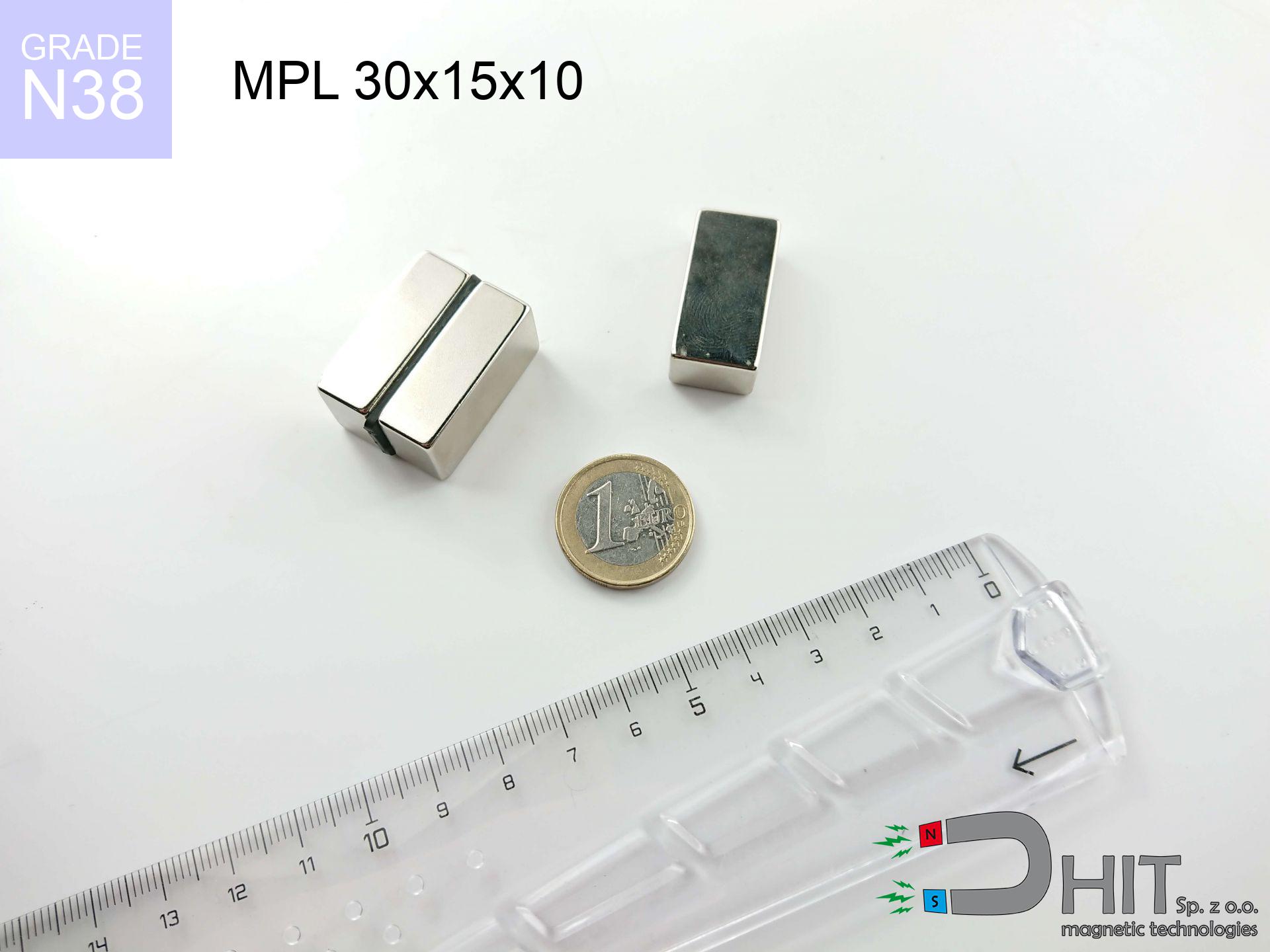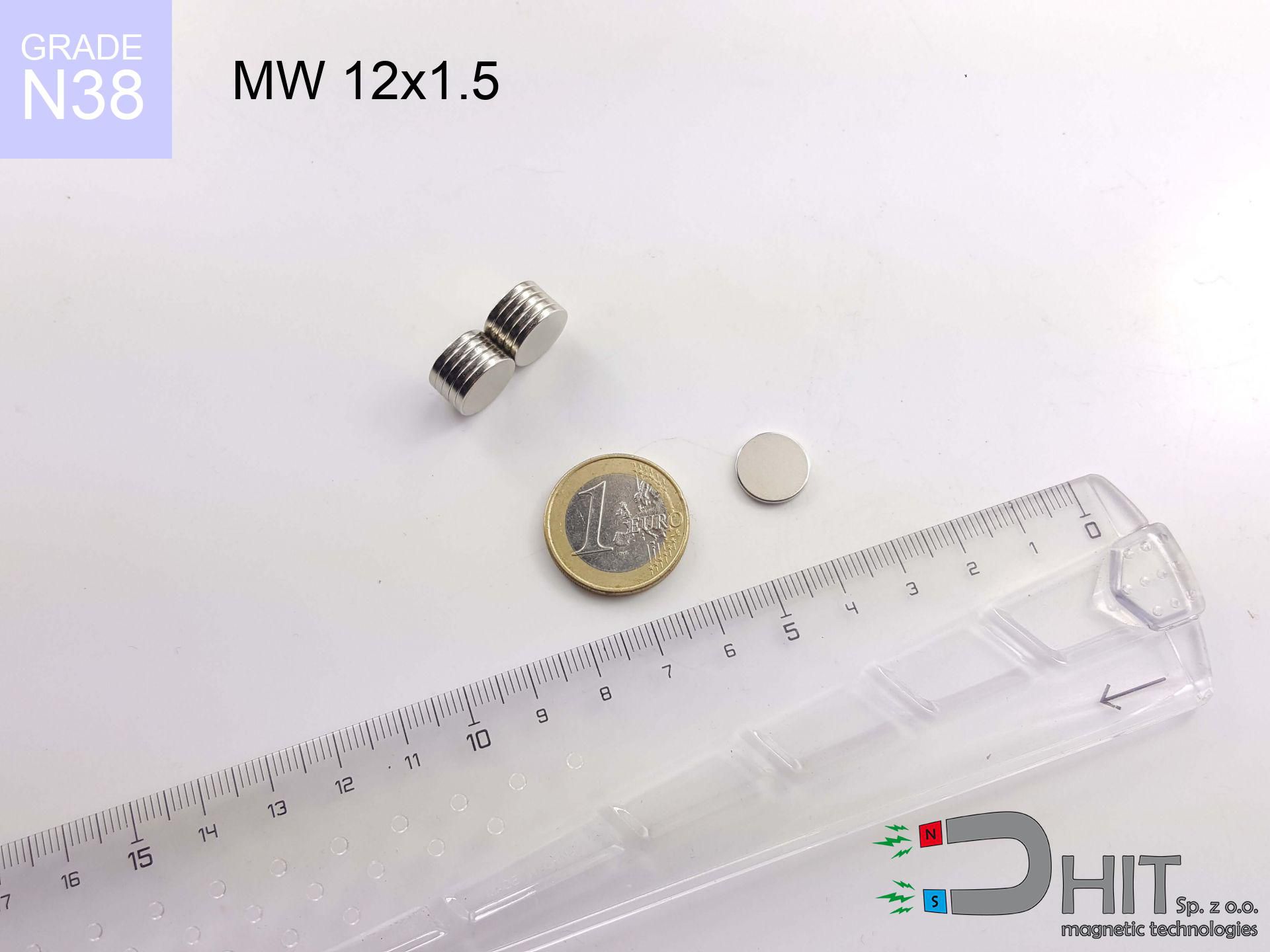UMGZ 36x18x8 [M6] GZ / N38 - magnetic holder external thread
magnetic holder external thread
Catalog no 190325
GTIN/EAN: 5906301813842
Diameter Ø
36 mm [±1 mm]
Height
18 mm [±1 mm]
Height
8 mm [±1 mm]
Weight
50 g
Load capacity
40.00 kg / 392.27 N
24.97 ZŁ with VAT / pcs + price for transport
20.30 ZŁ net + 23% VAT / pcs
bulk discounts:
Need more?
Call us now
+48 888 99 98 98
if you prefer send us a note through
form
the contact page.
Weight as well as form of a magnet can be reviewed using our
modular calculator.
Same-day shipping for orders placed before 14:00.
Product card - UMGZ 36x18x8 [M6] GZ / N38 - magnetic holder external thread
Specification / characteristics - UMGZ 36x18x8 [M6] GZ / N38 - magnetic holder external thread
| properties | values |
|---|---|
| Cat. no. | 190325 |
| GTIN/EAN | 5906301813842 |
| Production/Distribution | Dhit sp. z o.o. |
| Country of origin | Poland / China / Germany |
| Customs code | 85059029 |
| Diameter Ø | 36 mm [±1 mm] |
| Height | 18 mm [±1 mm] |
| Height | 8 mm [±1 mm] |
| Weight | 50 g |
| Load capacity ~ ? | 40.00 kg / 392.27 N |
| Manufacturing Tolerance | ±1 mm |
Magnetic properties of material N38
| properties | values | units |
|---|---|---|
| remenance Br [min. - max.] ? | 12.2-12.6 | kGs |
| remenance Br [min. - max.] ? | 1220-1260 | mT |
| coercivity bHc ? | 10.8-11.5 | kOe |
| coercivity bHc ? | 860-915 | kA/m |
| actual internal force iHc | ≥ 12 | kOe |
| actual internal force iHc | ≥ 955 | kA/m |
| energy density [min. - max.] ? | 36-38 | BH max MGOe |
| energy density [min. - max.] ? | 287-303 | BH max KJ/m |
| max. temperature ? | ≤ 80 | °C |
Physical properties of sintered neodymium magnets Nd2Fe14B at 20°C
| properties | values | units |
|---|---|---|
| Vickers hardness | ≥550 | Hv |
| Density | ≥7.4 | g/cm3 |
| Curie Temperature TC | 312 - 380 | °C |
| Curie Temperature TF | 593 - 716 | °F |
| Specific resistance | 150 | μΩ⋅cm |
| Bending strength | 250 | MPa |
| Compressive strength | 1000~1100 | MPa |
| Thermal expansion parallel (∥) to orientation (M) | (3-4) x 10-6 | °C-1 |
| Thermal expansion perpendicular (⊥) to orientation (M) | -(1-3) x 10-6 | °C-1 |
| Young's modulus | 1.7 x 104 | kg/mm² |
Material specification
| iron (Fe) | 64% – 68% |
| neodymium (Nd) | 29% – 32% |
| boron (B) | 1.1% – 1.2% |
| dysprosium (Dy) | 0.5% – 2.0% |
| coating (Ni-Cu-Ni) | < 0.05% |
Sustainability
| recyclability (EoL) | 100% |
| recycled raw materials | ~10% (pre-cons) |
| carbon footprint | low / zredukowany |
| waste code (EWC) | 16 02 16 |
Other offers
Strengths and weaknesses of Nd2Fe14B magnets.
Pros
- They do not lose magnetism, even during around ten years – the reduction in power is only ~1% (according to tests),
- They retain their magnetic properties even under close interference source,
- The use of an refined finish of noble metals (nickel, gold, silver) causes the element to be more visually attractive,
- Magnetic induction on the top side of the magnet is extremely intense,
- Through (adequate) combination of ingredients, they can achieve high thermal resistance, enabling operation at temperatures reaching 230°C and above...
- Possibility of custom modeling and modifying to individual needs,
- Wide application in high-tech industry – they are utilized in magnetic memories, brushless drives, diagnostic systems, as well as technologically advanced constructions.
- Compactness – despite small sizes they offer powerful magnetic field, making them ideal for precision applications
Cons
- Susceptibility to cracking is one of their disadvantages. Upon intense impact they can fracture. We recommend keeping them in a strong case, which not only secures them against impacts but also raises their durability
- We warn that neodymium magnets can reduce their strength at high temperatures. To prevent this, we recommend our specialized [AH] magnets, which work effectively even at 230°C.
- Magnets exposed to a humid environment can rust. Therefore during using outdoors, we suggest using water-impermeable magnets made of rubber, plastic or other material protecting against moisture
- We recommend cover - magnetic mount, due to difficulties in creating threads inside the magnet and complicated shapes.
- Potential hazard to health – tiny shards of magnets pose a threat, when accidentally swallowed, which gains importance in the aspect of protecting the youngest. Furthermore, small elements of these magnets are able to be problematic in diagnostics medical after entering the body.
- Higher cost of purchase is one of the disadvantages compared to ceramic magnets, especially in budget applications
Holding force characteristics
Breakaway strength of the magnet in ideal conditions – what contributes to it?
- using a plate made of mild steel, functioning as a circuit closing element
- whose transverse dimension is min. 10 mm
- with an ground contact surface
- without any insulating layer between the magnet and steel
- for force applied at a right angle (pull-off, not shear)
- in temp. approx. 20°C
Determinants of lifting force in real conditions
- Clearance – existence of foreign body (paint, dirt, gap) acts as an insulator, which reduces power rapidly (even by 50% at 0.5 mm).
- Load vector – maximum parameter is obtained only during pulling at a 90° angle. The shear force of the magnet along the plate is typically many times lower (approx. 1/5 of the lifting capacity).
- Base massiveness – insufficiently thick steel causes magnetic saturation, causing part of the power to be escaped into the air.
- Material type – the best choice is high-permeability steel. Stainless steels may attract less.
- Base smoothness – the smoother and more polished the plate, the larger the contact zone and stronger the hold. Roughness creates an air distance.
- Temperature – heating the magnet causes a temporary drop of force. It is worth remembering the thermal limit for a given model.
Lifting capacity testing was conducted on plates with a smooth surface of optimal thickness, under perpendicular forces, whereas under attempts to slide the magnet the load capacity is reduced by as much as 75%. Moreover, even a slight gap between the magnet’s surface and the plate reduces the lifting capacity.
Safe handling of NdFeB magnets
Keep away from computers
Powerful magnetic fields can erase data on payment cards, hard drives, and storage devices. Stay away of at least 10 cm.
Dust explosion hazard
Powder produced during cutting of magnets is self-igniting. Avoid drilling into magnets unless you are an expert.
Handling rules
Before use, check safety instructions. Uncontrolled attraction can destroy the magnet or hurt your hand. Be predictive.
Heat warning
Watch the temperature. Exposing the magnet to high heat will ruin its properties and pulling force.
Protective goggles
NdFeB magnets are ceramic materials, meaning they are very brittle. Impact of two magnets will cause them cracking into shards.
Sensitization to coating
Allergy Notice: The Ni-Cu-Ni coating consists of nickel. If redness occurs, cease working with magnets and use protective gear.
Threat to navigation
An intense magnetic field disrupts the functioning of compasses in phones and GPS navigation. Do not bring magnets close to a smartphone to prevent breaking the sensors.
Life threat
Life threat: Neodymium magnets can turn off heart devices and defibrillators. Stay away if you have medical devices.
Serious injuries
Pinching hazard: The attraction force is so great that it can cause hematomas, pinching, and broken bones. Protective gloves are recommended.
Do not give to children
Neodymium magnets are not toys. Accidental ingestion of a few magnets can lead to them pinching intestinal walls, which constitutes a critical condition and requires immediate surgery.

![Magnetic holder with external thread UMGZ 36x18x8 [M6] GZ / N38 Magnetic holder with external thread UMGZ 36x18x8 [M6] GZ / N38](https://cdn3.dhit.pl/graphics/banners/magnet.webp)
![UMGZ 36x18x8 [M6] GZ / N38 - magnetic holder external thread](https://cdn3.dhit.pl/graphics/products/um-36x18x8-m8-gz-xiv.jpg)
![UMGZ 36x18x8 [M6] GZ / N38 - magnetic holder external thread - ujęcie 2](https://cdn3.dhit.pl/graphics/products/umgw-36x18x8-m8-gz-zim.jpg)

![UMGZ 16x13x5 [M4] GZ / N38 - magnetic holder external thread UMGZ 16x13x5 [M4] GZ / N38 - magnetic holder external thread](https://cdn3.dhit.pl/graphics/products/um-16x13x5-m4-gz-cor.jpg)



